Should employees use social media in the workplace? What are the pros and cons of it? How to get the most out of employees’ engagement on social media?
If you are looking for ways to better leverage social media usage in the workplace or if you are looking to build an employee advocacy program, this article is for you!
📚 Later in this article, you will learn that social media can boost employee engagement in the workplace. So before we move forward, get our brand new Employee Engagement Report 2022!
Get the most out of social media in the workplace with the right EA tools
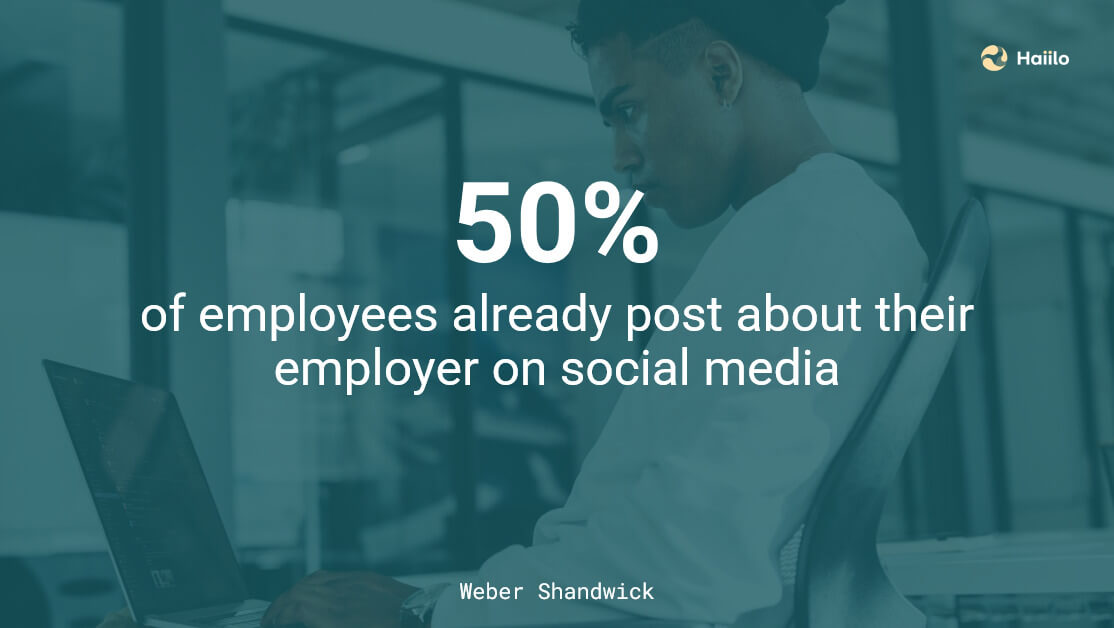
Furthermore, employees themselves see many benefits in using social media at work. According to research, 82% of employees say social media can improve work relationships, and 60% say it can support decision-making processes.
Also, employees who use social media for work (3 out of every 4 employees) stated the following benefits:
- 71% – staying in touch with others in the same field
- 56% – connecting with experts
- 51% – getting to know co-workers on a personal level
Many employers, however, are not aware that their employees are already sharing the company’s content on their social media profiles. Hence they are unaware of all the benefits and downsides that social media in the workplace may cause.
Let’s now take a look at some of them.
💡 Before we move forward, learn about the latest social media trends for 2022!
2. It can increase your company’s profits and sales
According to research, 33% of employers encourage their employees to use social media to share news and information about the organization. Such social encouragement can result in significantly better performance among sales professionals who use social media for thought leadership. For example, employees with socially-encouraging employers are considerably more likely to help boost sales than employees whose employers aren’t socially encouraging (7% vs. 48%, respectively).
💡 Before we move forward, don’t forget to read our guide for building a brand ambassadorship program!
3. It can increase your employees’ engagement
More and more companies are implementing social-media-like tools within their workplaces in order to improve internal communication in their organizations. These social intranets mimic the features and functionalities of the most popular social media networks and are designed to keep employees connected and well informed at all times.
Personalized news feeds provide relevant information to every employee, making sure that workers never miss on important company information, while collaboration features make it easy for teams to collaborate even if they work remotely.
On the other hand, social advocacy platforms can boost employees’ engagement and motivation to share their company’s content with the external world and engage in various advocacy initiatives and internal marketing campaigns.
💡 Check out our ultimate guide for boosting employee engagement!
4. It can improve customer experience
Nowadays, providing customer support on social media is a must. So using social media to provide customer support is a no-brainer.
Many happy and unhappy customers use social media to mention brands and recommend or complain about products and services.
In order to provide a stellar customer experience, companies need to be present on social media and address all customer-facing issues.
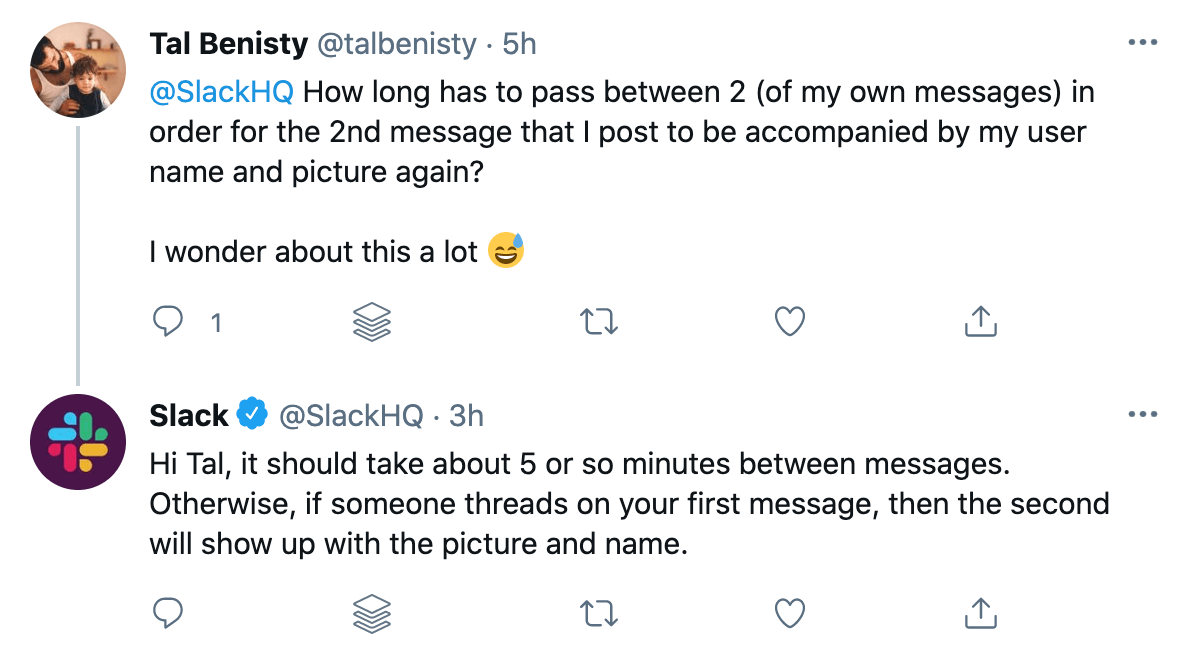
💡 Check our guide for boosting engagement on social media!
5. It can help you attract new talent
A stronger employer brand is one of the biggest benefits of social media at work. According to LinkedIn data, 69% of unemployed candidates won’t even apply to a company if the company’s social media presence is unattractive. So your employees’ engagement on social media is crucial for showcasing your company’s culture and attracting new talent to your organization. As a result, companies with a successful employee advocacy program are 58% more likely to attract top talent.
So, if you want to improve your employer brand, allow employees to use social media and share their workplace moments and experiences with the outside world!
💡If you are a social recruitment fan, check out our social media recruitment guide!
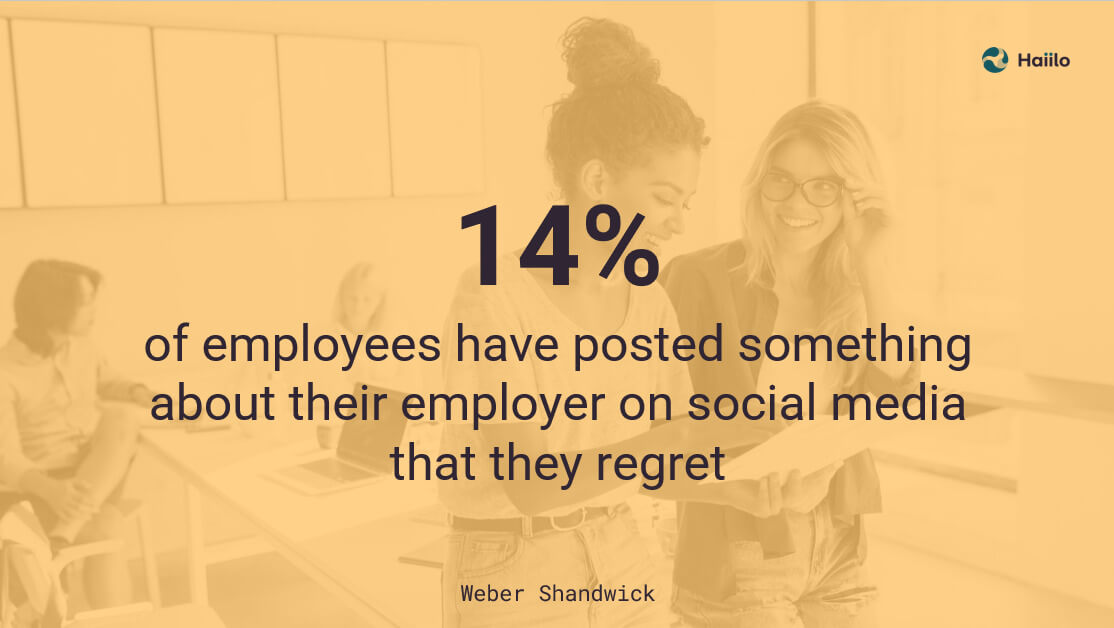
So social media can both make and break your company’s reputation. Inappropriate posts or comments can quickly go viral and damage your company’s brand. The best way to prevent this from happening is continuous employee communications and training about how to use social media at work responsibly.
💡 If you are in B2B business, LinkedIn is probably a vital marketing channel for you. If so, check our ultimate LinkedIn marketing guide!
It can cause security issues
Online hackers, viruses, and scams are becoming more common these days, and many come from social media. If your company doesn’t take user privacy seriously, accessing social media in the workplace may be a significant risk.
The very minimum you should do is educate employees about secure and strong passwords and requiring 2-factor authentication. It will help to avoid the leaks of work-related data online.
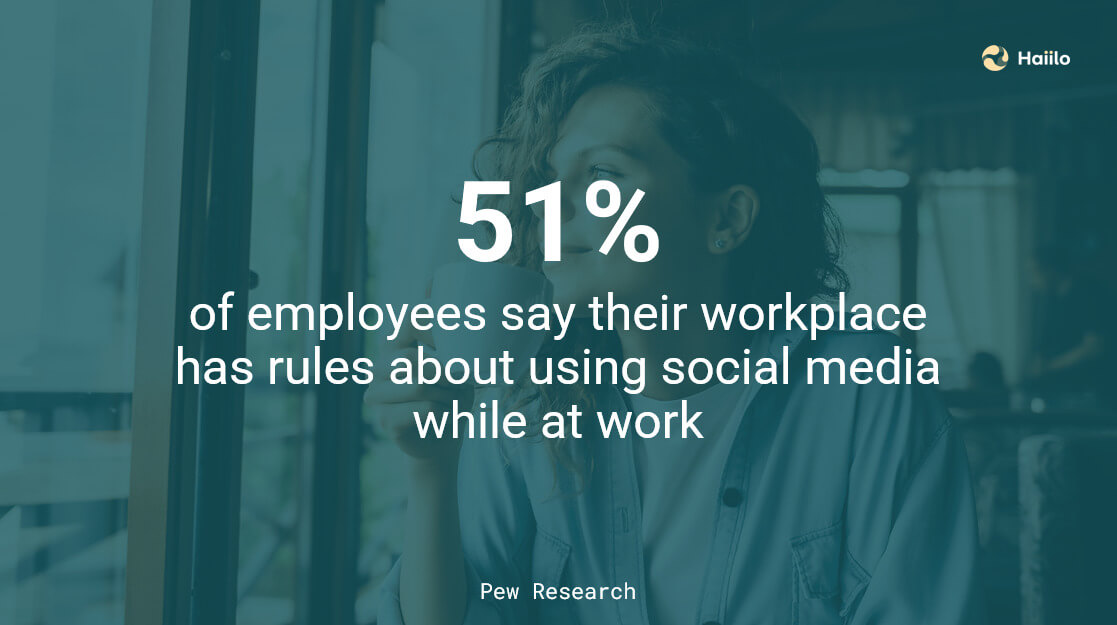
If you want your employees to be active on social media and act as brand advocates, it is essential to help them understand acceptable behaviors on social media. Many employees today may avoid posting about their employers on social media simply because they are unsure about what they should and shouldn’t post about.
💡 If your organization still doesn’t have a social media policy, we have prepared for you the ultimate social media policy guide!
Implement a social intranet
Even if you don’t allow your employees to use social networks such as Facebook and Instagram at work, you should encourage social interactions in your digital workplace. This is why many employers today are introducing social-media-like technologies that can boost employee experience, engagement, learning and development, and productivity at work.
This is particularly important for fully remote and hybrid workplaces where employees are physically separated.
Digital workplace platforms such as social intranets make social collaboration easier by giving employees a centralized platform to collaborate and communicate. It offers personalized news feeds, a knowledge repository, and communication channels that enable employees to stay informed and connected at all times.
Introduce an employee advocacy program
According to research, 58.8% of employees in a formal employee advocacy program spend more than five hours weekly on social media for business use. For those in a non-formal program, however, only 31.8% spent greater than five hours online.
Furthermore, 79% of firms surveyed reported more online visibility after implementing a formal employee advocacy program.
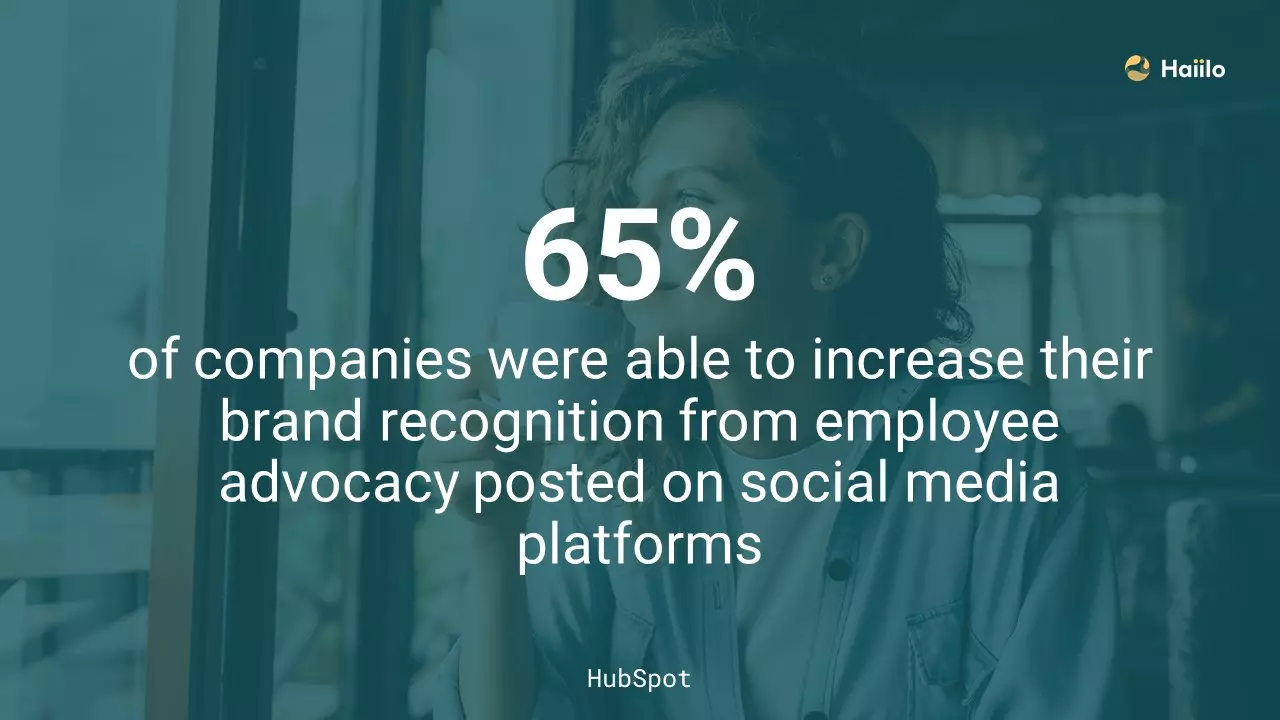




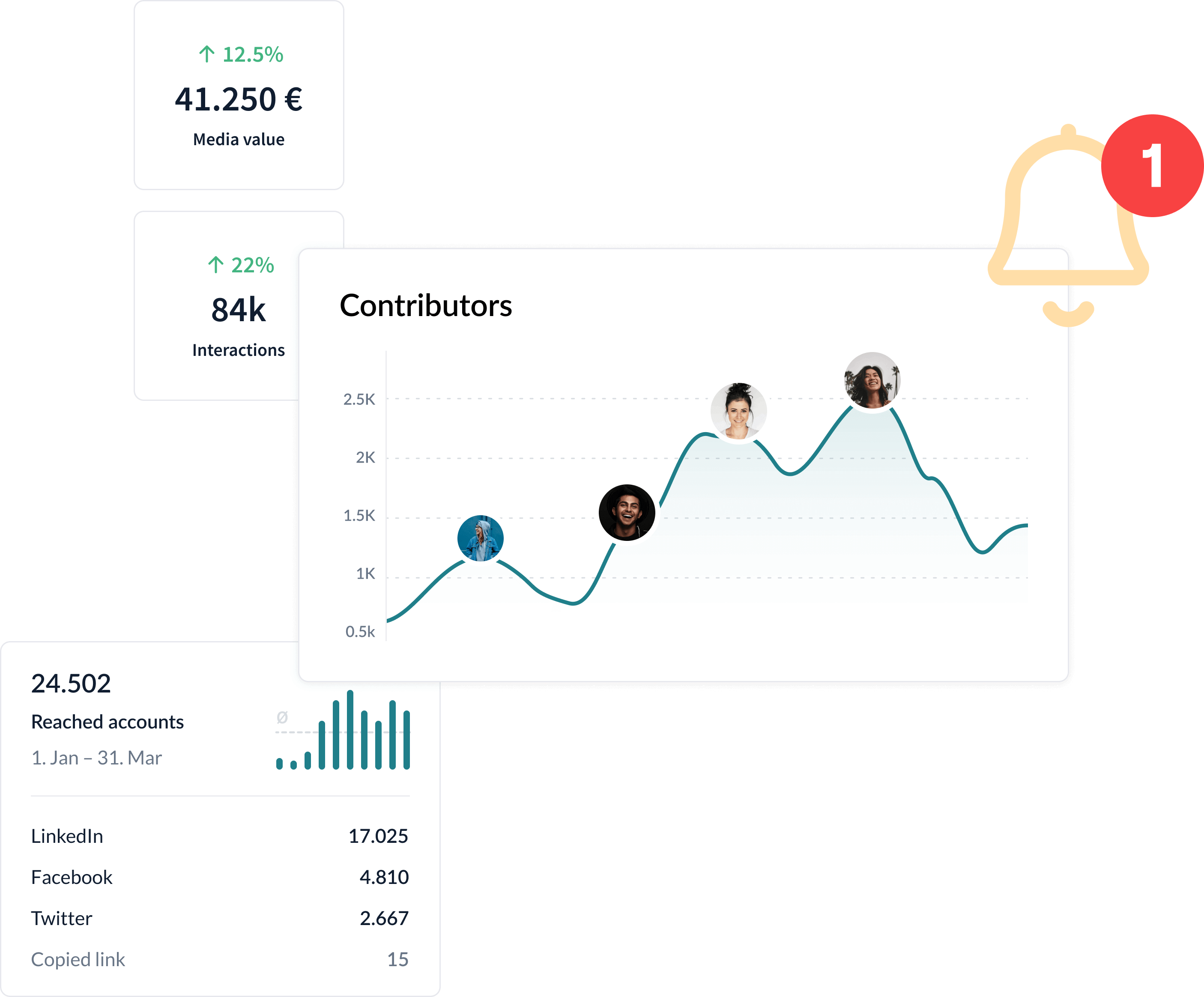






About Social Media In the Workplace
A few years back, many employers were prohibiting employees from using social media in the workplace. Many human resources professionals and managers considered social media a big productivity killer.
Is this still the case? Has this perception changed today in 2022?
Not allowing employees to use social media when at work is almost impossible today when nearly 98% of employees use social media for personal use. Moreover, 80% of employees admit that they use social media in the workplace. And 50% of them already post about their employer on social media.